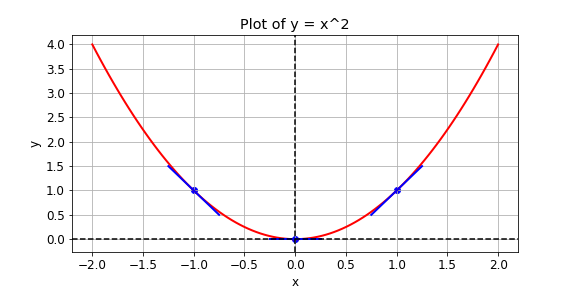Optimizing with gradients
You are given a loss function, \(y = x^{2}\), which you want to minimize. You can do this by computing the slope using the GradientTape() operation at different values of x. If the slope is positive, you can decrease the loss by lowering x. If it is negative, you can decrease it by increasing x. This is how gradient descent works.

In practice, you will use a high level tensorflow operation to perform gradient descent automatically. In this exercise, however, you will compute the slope at x values of -1, 1, and 0. The following operations are available: GradientTape(), multiply(), and Variable().
Diese Übung ist Teil des Kurses
Introduction to TensorFlow in Python
Anleitung zur Übung
- Define
xas a variable with the initial valuex0. - Set the loss function,
y, equal toxmultiplied byx. Do not make use of operator overloading. - Set the function to return the gradient of
ywith respect tox.
Interaktive Übung
Vervollständige den Beispielcode, um diese Übung erfolgreich abzuschließen.
def compute_gradient(x0):
# Define x as a variable with an initial value of x0
x = ____(x0)
with GradientTape() as tape:
tape.watch(x)
# Define y using the multiply operation
y = ____
# Return the gradient of y with respect to x
return tape.gradient(____, ____).numpy()
# Compute and print gradients at x = -1, 1, and 0
print(compute_gradient(-1.0))
print(compute_gradient(1.0))
print(compute_gradient(0.0))